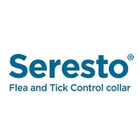
Introduction
Lymphoma is one of the most common types of cancer found in dogs. It affects the lymphatic system — a crucial part of your dog’s immune system responsible for fighting infections and maintaining overall health. Although the diagnosis can sound alarming, modern veterinary medicine offers effective treatment options that can help many dogs live longer and enjoy a good quality of life.
This article will help you understand what lymphoma is, its symptoms, diagnosis, treatment options, and how you can support your dog through this condition.
What Is Lymphoma in Dogs?
Lymphoma is a type of cancer that develops in the lymphocytes, a form of white blood cell. These cells play a vital role in your dog’s immune system, helping to fight infections. Lymphoma can occur anywhere lymphatic tissue is present, including the lymph nodes, spleen, liver, bone marrow, and intestines.
There are several types of lymphoma in dogs, but the most common are:
- Multicentric Lymphoma – This type of lymphoma affects the lymph nodes throughout the body and is the most common form, accounting for nearly 80% of cases.
- Alimentary Lymphoma – Occurs in the gastrointestinal tract and can cause digestive problems.
- Mediastinal Lymphoma – Affects the chest area, especially around the lungs and heart.
- Extranodal Lymphoma – Involves other organs such as the skin, eyes, kidneys, or nervous system.
Common Symptoms of Lymphoma in Dogs
Lymphoma symptoms can differ based on the form of the cancer and how advanced it is. However, early recognition is essential for timely treatment. Some common signs include:
- Swollen lymph nodes (most commonly under the jaw, behind the knees, or in front of the shoulders)
- Lethargy or fatigue
- Loss of appetite
- Unexplained weight loss
- Increased thirst and urination
- Fever
- Difficulty breathing or coughing (if the chest area is affected)
- Vomiting or diarrhea (in alimentary lymphoma)
- Skin lesions or redness (in extranodal lymphoma)
If you notice these symptoms, it’s essential to take your dog to the vet immediately for a proper diagnosis.
How Lymphoma Is Diagnosed
Diagnosis of lymphoma typically begins with a physical examination and palpation of the lymph nodes. Your veterinarian may recommend the following tests to confirm the condition:
- Fine-needle aspiration (FNA) – A small needle is used to collect cells from a swollen lymph node for examination under a microscope.
- Biopsy – A small tissue sample may be taken to determine the type and stage of the cancer.
- Blood tests – Performed to evaluate your dog’s general health and identify any irregularities in white blood cell levels.
- X-rays or ultrasound scans – To check for internal organ involvement.
- Bone marrow examination – Conducted to determine whether the cancer has reached or affected the bone marrow.
An early and precise diagnosis enables veterinarians to create a personalized treatment plan tailored to your dog’s unique condition.
Treatment Options for Lymphoma in Dogs
The good news is that lymphoma in dogs is one of the most treatable cancers. Although it is usually not curable, many dogs respond very well to treatment and can live comfortably for months or even years.
Here are the most common treatment options:
1. Chemotherapy
Chemotherapy is the main treatment for canine lymphoma. It uses a combination of drugs to target and destroy cancer cells. Dogs usually tolerate chemotherapy better than humans, and side effects, such as hair loss or nausea, are minimal in most cases.
- Success Rate: Around 80–90% of dogs show improvement with chemotherapy.
- Remission Duration: Remission can last from 6 months to over a year, depending on the type and stage of lymphoma.
2. Steroids (Prednisone)
In cases where chemotherapy isn’t an option due to cost or health reasons, steroids like prednisone can help reduce swelling and improve appetite. However, steroids only manage symptoms and don’t cure the disease.
3. Radiation Therapy
Radiation therapy is sometimes recommended for lymphoma that affects only one area, such as the skin or a single organ. It is often used in combination with chemotherapy for better results.
4. Surgery
Surgery is rarely used since lymphoma usually affects multiple areas. However, it may be considered if the cancer is confined to one organ or mass.
Prognosis and Life Expectancy
Without treatment, dogs with lymphoma typically survive for about 4–6 weeks after diagnosis. However, with chemotherapy, many dogs can go into remission for 6–12 months or longer, and some live for two years or more.
The prognosis depends on several factors, including:
- The type of lymphoma
- The stage of the disease
- The dog’s age and overall health
- The response to treatment
Your veterinarian will provide guidance on the best treatment plan and what to expect during your dog’s recovery journey.
Caring for a Dog with Lymphoma
If your dog is facing a diagnosis of lymphoma, your compassion and attentive care can greatly influence their recovery journey. Here’s how you can help:
- Provide a nutritious diet: Consult your vet about the best diet plan to strengthen your dog’s immune system.
- Ensure regular veterinary visits: Frequent check-ups are crucial for monitoring progress and managing side effects.
- Keep them comfortable: Offer a calm environment, gentle exercise, and plenty of affection.
- Watch for side effects: Report any vomiting, diarrhea, or changes in appetite to your vet promptly.
- Emotional support: Dogs are susceptible to their owners’ emotions. Staying calm and positive helps them feel secure.
Prevention and Early Detection
There is no guaranteed way to prevent lymphoma, as the exact cause remains unclear. However, early detection can significantly improve your dog’s chances of successful treatment. Routine vet visits, a balanced diet, and supporting your dog’s immune health are essential to maintaining their strength and overall health.
If you notice any sudden swelling or behavioral changes, don’t ignore them — early diagnosis can make a big difference.
Conclusion
Lymphoma in dogs can be a frightening diagnosis, but it doesn’t have to mean the end. With early detection, proper treatment, and consistent care, many dogs lead happy and fulfilling lives despite the disease. Regular vet visits and staying vigilant for any changes in your dog’s health can help ensure they receive the care they deserve.
Your care, patience, and positive involvement can play a vital role in helping your beloved dog heal and regain their strength.






